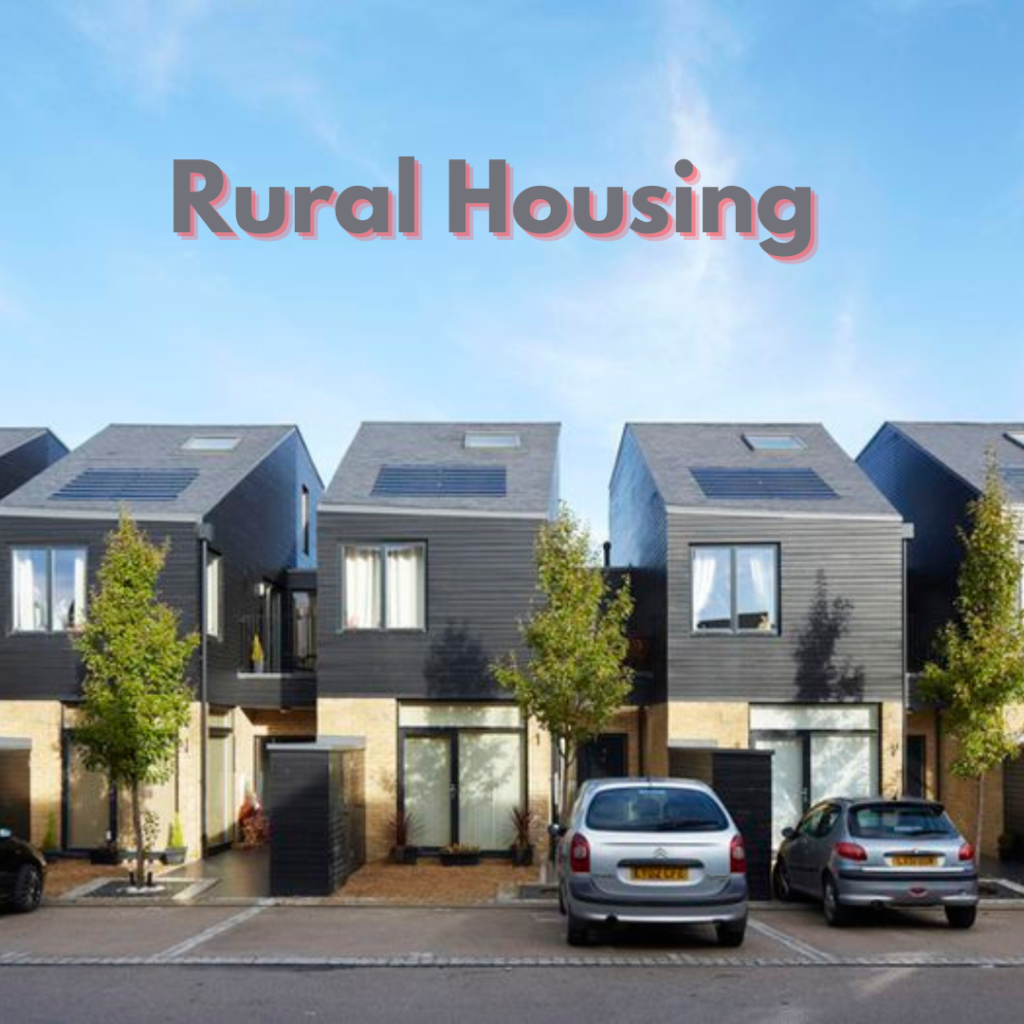Rural housing impact on the real estate is very intence because rural housing is essential to meet the housing needs of communities living in rural locations. In addition to promoting sustainable development, these initiatives seek to enhance living circumstances and offer reasonably priced housing options in rural areas. The main goal of rural housing programs is to provide the housing that rural populations need. By offering solutions for secure, affordable, and sustainable housing, these programs aim to raise living standards and promote community growth. In this blog we will explore rural housing programs and analyze their impact on the real estate industry.
Understanding Rural Housing Programs
Governments, nonprofits, and businesses in the private sector all conduct various programs related to rural housing to address housing issues in these areas. The requirements of low-income households, underprivileged populations, and people residing in underserved areas are given priority by these initiatives. Their goal is to guarantee that every person has access to excellent, safe, and affordable housing, which will improve their quality of life and promote community growth.
Impact of Rural Housing Programs :

Rural housing programs have a profound impact on communities, individuals, and the overall socio-economic development of rural areas. Some of the notable impacts include.
- Improved Living Conditions
Programs for rural housing improve the quality of life for people living in rural areas by building sturdy, weather-resistant, and safe housing units. These houses, which offer families safe and comfortable accommodation, frequently take the place of inadequate or subpar housing constructions. Better housing conditions have a positive impact on people’s quality of life, health, and general well-being.
- Economic Development
Economic activity in rural areas is stimulated by the implementation of rural housing programs. Jobs and employment opportunities are created by construction projects for locals, including workers, masons, carpenters, and plumbers. Demand for building supplies and services also stimulates regional companies and industries, which promotes economic development. Local economies grow more robust and sustainable as communities prosper.
- Poverty Alleviation
Poverty reduction initiatives heavily depend on the availability of inexpensive housing through rural housing programs. A foundation for social progress and economic stability is provided to families by safe and secure housing. Rural households are better able to allocate their resources toward healthcare, education, and other necessities when housing-related costs like rent or mortgage payments are reduced. Providing children with a stable environment for learning and development is another way that stable housing contributes to ending the cycle of intergenerational poverty.
- Community Empowerment
The planning, designing, and construction of housing projects is a way that rural housing programs give local communities more influence. Residents who are involved in the community have more pride and ownership in their community, which promotes social cohesiveness and group activity. Communities can take care of their housing requirements and goals by employing participatory approaches, which guarantees that housing solutions are customized to suit local conditions and cultural preferences. Communities that have more influence are better able to promote their interests and effect constructive change.
- Infrastructure Development
Initiatives for the development of infrastructure, such as roads, water supply systems, and sanitary facilities, frequently align with rural housing schemes. In remote locations, having access to essential infrastructural services raises the standard of living overall and makes these towns more appealing to both inhabitants and investors. Infrastructure investments also boost the economy by lowering the cost of transportation, opening up new markets, and promoting trade and business.
- Environmental Sustainability
To reduce their negative environmental effects, many rural housing programs place a high priority on green building techniques and sustainable technologies. These programs support climate resiliency and environmental preservation by endorsing eco-friendly materials, renewable energy sources, and energy-efficient architecture. In addition to lowering resource consumption and carbon emissions, sustainable housing solutions give people better, more ecologically friendly living spaces.
- Social Impacts and Inclusion
Social integration and stability in rural communities are enhanced by access to adequate housing. Individuals and families that live in stable housing feel more secure and a part of the community, which strengthens their social connections. Rural housing initiatives also make sure that no one is left behind in the pursuit of quality and affordable housing by giving priority to the needs of marginalized and vulnerable populations, such as ethnic minorities, indigenous communities, and individuals with disabilities.


